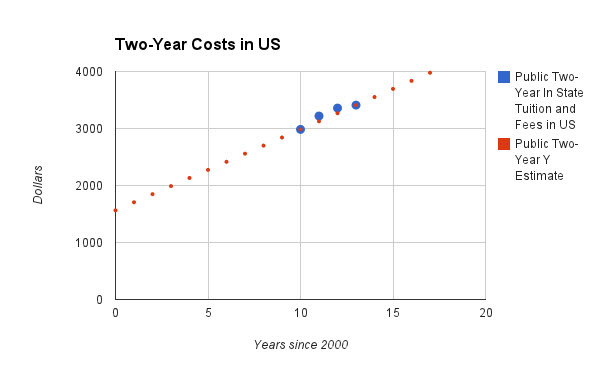
This is my hope my collaborative teams…together they can do more than any one of them can do alone. However, you can’t throw four or five students together and expect them to be productive right away. Ease them into working together and then have them make some decisions together.
This is the idea behind the first project I assign students in MAT 152 College Algebra. Each team is given data for two-year and four college costs in a particular state. The goal is to use the data to calculate the savings a student might incur by attending a two-year college as part of a four year college education. The project letter below describes the task.
Through a series of scaffolding assignments, each student makes a scatter plot of the data and finds a linear model that passes through two of the data points.

Once they do create their models, they also need to decide which of the models their team has produced is best. They compare the percent error at each data point to determine which model goes closest to the data. This often requires students to meet together to make this decision. Online students typically work through a shared document containing all of their work and chat online. In both situations, a decision needs to be made from work that has been produced in parallel.
By giving students parallel tasks and requiring them to make a decision based on these tasks, they attack the problem efficiently. Without the team collaboration, an individual would need to check all six possible models of the data and then decide which model is best. Collaboration reduces this task significantly. Once students see this, they often are drawn to the team since it saves them work. They also like the fact that they have a built in support network. If they have problems with their part of the assignment, they can contact the rest of the team for help since they are all working on similar tasks.
In my next post, I’ll look at how a shared document can be used to promote communication and effective collaboration.
